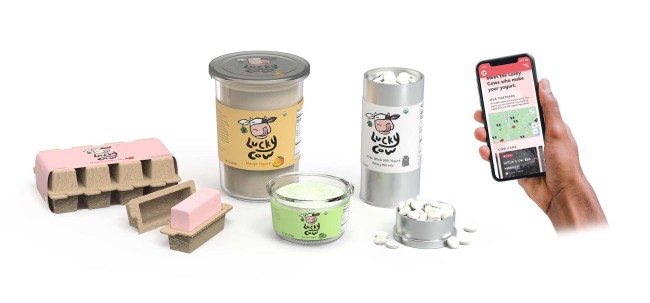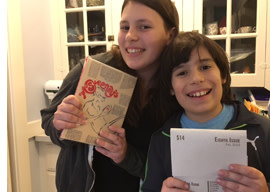
Supply chain disruptions. The drive toward sustainability. The desire of small companies to compete globally. Due to these factors and more, the art and science of product packaging has evolved radically in recent years. Whether we’re talking about recyclable packing material or a hermetically sealed electronics package that can be opened without the assistance of power tools, consumers notice the details. And they have opinions.
The better and more creative packaging becomes, the higher consumer expectations rise. And the more expectations soar, the more we have to think beyond the blister pack/plastic tub/cellophane wrapper. There are financial constraints, of course. We have to acknowledge that consumers are price-conscious and don’t want to feel like they are paying a premium for smart packaging. It’s a balance.
Rethinking packaging requires a human-centered design ethos in the most fundamental way. It helps to pretend we are visiting from a distant planet to learn about Earthling behavior. How do they use their hands to open a bag, as opposed to a box? How do mouth mechanics affect the way they consume food? And how do their senses experience the unwrapping of a new product?
A Global Reckoning
Consumers, companies, and countries are all increasingly focused on sustainability. As worrisome headlines about climate change become a daily event, people are using both their wallets and the ballot box to support green initiatives.
Companies like Starbucks are embracing sustainability as a core brand element. Offering reusable cups and strawless lids, they are beginning to set Earth-friendly standards while continuing to try new innovations like their “Borrow a Cup” pilot program in Seattle.
Consumers notice and support brands that they feel align with their sustainability values. Chipotle reaps benefits from their Environmental, Social, and Governance (ESG) efforts, largely because these things matter to both employees and customers. Even if Chipotle’s packaging doesn’t represent the ideal in sustainability, people associate the look-and-feel of the brand with greener efforts, and perception alone can help burnish a brand’s Earth-friendly bona fides.
In more countries than ever before, legislation is impacting packaging specifications, attributes, intended uses, and supply chains from raw materials to end of life. Further, legislation around reusables is expanding.
The European Union has some of the strictest regulations on recycling, packaging and the use of plastics. Its directive on single-use plastics targets food and beverage containers, cutlery, as well as packets and wrappers. Similar initiatives are in effect or under discussion across the Americas and Asia.
A Cautionary Tale
Satisfying consumer preferences, sustainability commitments, and impending legislation are all necessary in the greener packaging game, but that’s easier said than done. More sustainable solutions are hitting the market each and every day. Often, things like time-to-market or regulations are driving decisions, and this can affect the result, leading to challenges with user satisfaction and adoption.
Paper straws are a cautionary tale. In the rush to meet legislation outlawing plastic straws, consumers were handed some flimsy replacements. Anyone who has tried to drink through a partially collapsed paper straw recognizes that user experience was not fully considered.
The ideal user experience lives at the intersection of what is ideal for people, technically feasible for an organization, and financially viable for the business. We always address all three, but we lead with our human-centered approach.
Embedded content: https://twitter.com/RachMoskowitz/status/1134550198821298176The Customer Is Always Right
Consumers—that is the diners, patients, or pet owners in question—are at the center of our story. Always. Which means we have to observe them in their natural environment. The truth isn’t always in what they say, it’s quite often in what they do.
There are many tools to help you tackle packaging innovation smartly, using a customer-led approach. Our tested strategies give us all the information we need to develop solutions that will work. The foundation of this approach is our one-on-one ethnographic research conducted where people live, work, study, play, and travel. By spending time with consumers on a plane or in their kitchen, we can more actively observe behaviors in a way that goes far beyond an interview. As part of our process, we might employ:
• Longitudinal video studies
• Shop-alongs
• Sensory testing (e.g., understanding how scent or lighting impact the experience)
• Sacrificial modeling (before prototyping, we might watch consumers use and/or rank hands-on materials or react to a stimulus)
• Early-stage prototyping
• Biometric research (e.g., eye-tracking software)
• Virtual studies that mimic some of the above remotely when necessary
Case Studies: Liquid Intake Habits of Earthlings and Taco Night
The key to all these forms of research is to unlearn all your preconceptions and view consumers as aliens from a distant planet.
Take drinking. Whether sipping, guzzling, or somewhere in between, we are all pretty familiar with how to drink a variety of beverages. But it actually helps to put that aside. In one project, for example, we used cameras in water bottles to better understand how different people imbibe. By examining the mechanics of our drinkers, we learned that everyone uses some form of sucking, pulling, and pouring movements to get liquid down the hatch. That discovery enabled us to design packaging with an opening that is optimized for any drinker. With the improved design, our testers reported that the same beverage tasted better. Although the beverage was unchanged, the new design enhanced the overall experience—precisely the goal of good design.

Sustainability, costs, and all the usual considerations were still part of the mix; however, the experience led the way and helped the company sell the new packaging to so many brands, it’s now ubiquitous and is used on millions of the containers they sell annually.
In addition to the inside of a water bottle, our human-centered research has found us exploring the toothbrushing habits of children and adults, the myriad ways women interface with their beauty products and family taco night.
To redesign Daisy’s sour cream packaging, we sat at dinner tables watching how children and adults alike struggle to successfully apply sour cream to their Tex-Mex favorites. It comes down to control. Turns out, it’s universally challenging to dollop without dipping, which means bits of cheese or meat end up in the traditional sour cream tub. Through many iterations, we developed an inverted-foil package that solved that pain point and at the same time maintained the same great flavor, was convenient to use when baking and made it simple to avoid wasting product.
Observe, Create, Iterate, Repeat
In our generative and evaluative research, we study both functional needs (the conscious problems we can observe or know exist today) and emotional desires (the subconscious elements that ladder up to aspirations and values). The right ideas, the ones that solve our clients’ business challenges, hang out at this junction.
Using this approach, you can deeply understand people, their values, and the relationships they desire with products, services, and brands. And of course, the idea is only the starting point. Especially when it comes to physical products and offerings, such as packaging, we highly recommend creating early embodiments of the ideas to further assess market demand and inform design refinement and requirements for launch. Packaging design can elevate a product, as long as we keep humans at the center of the design process.





